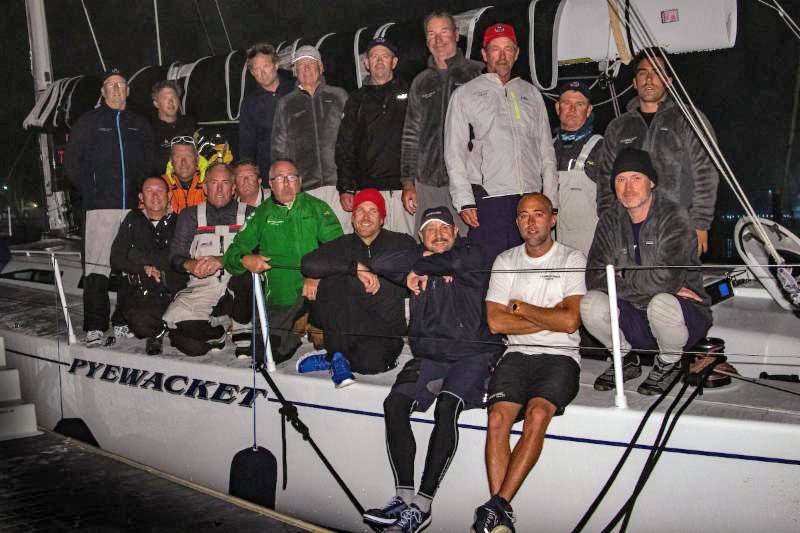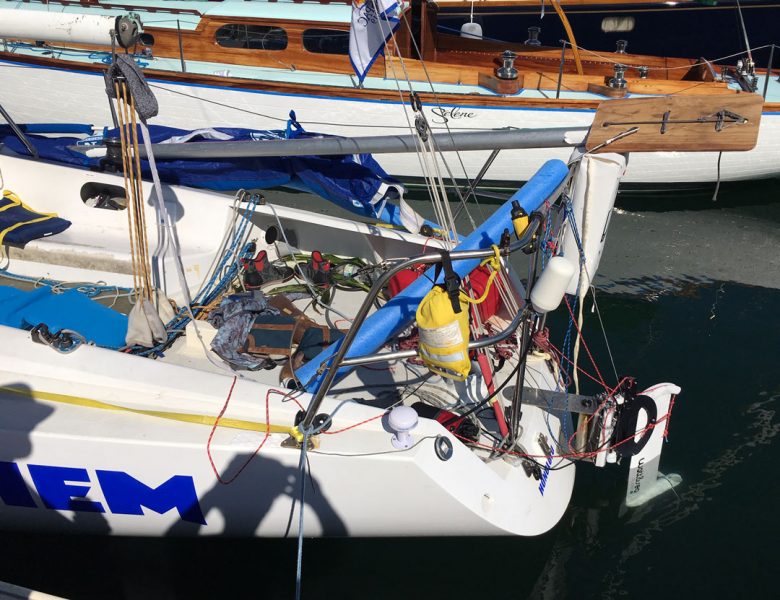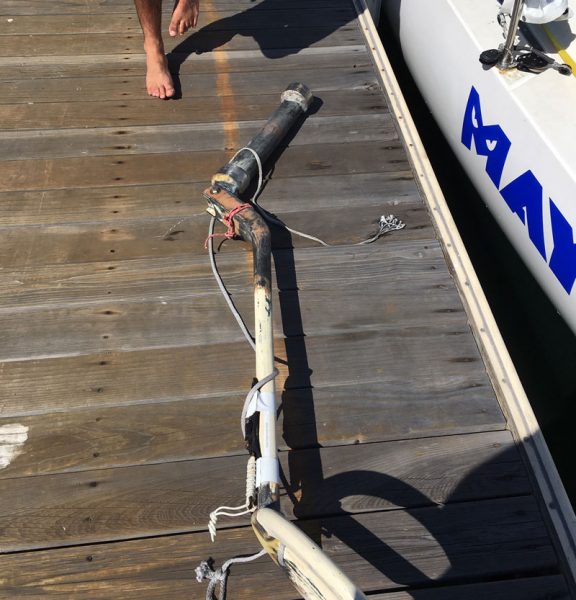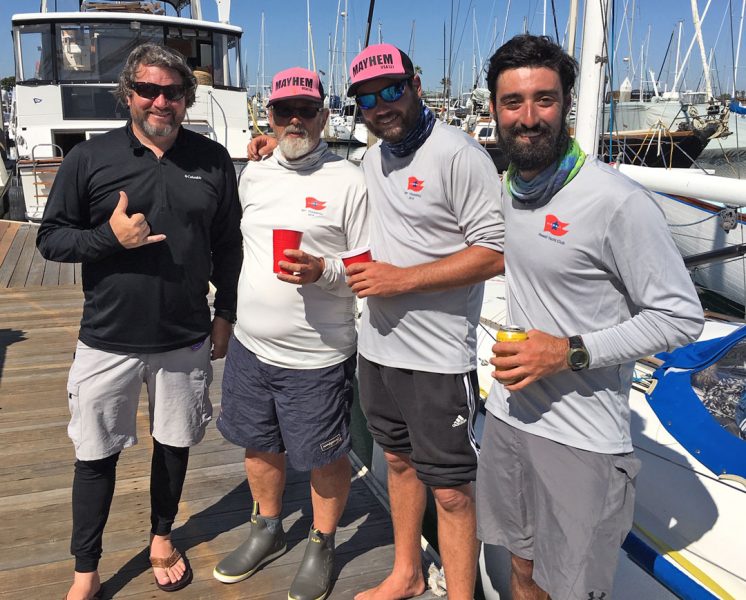
Transpac Sails in Both Directions
Just as many teams are unexpectedly arriving back in California with wounded boats, or in the case of one team, no boat at all, a trio of MOD70s at the front of the fleet is beginning to line up their approach to the Hawaiian Islands. Jason Carroll’s Argo team is sailing a superb race that has seen them maintain a cushion of about 70 miles over Peter Cunningham’s PowerPlay, which is pushing them hard from behind. Giovanni Soldini’s Maserati remains in third place among the three MOD70s that are racing to be the first boat into Honolulu in Transpac 50. As of this writing, Argo had just under 500 miles left to sail. They should finish overnight on Thursday, roughly 10 hours or so off Mighty Merloe’s record pace two years ago.
Aside from the race itself, the storyline of Transpac 50 that has garnered the most attention is undoubtedly the loss of John Sangmeister’s Santa Cruz 70 OEX, and the eventual rescue of her crew by Roy P. Disney and crew onboard the Andrews 70 Pyewacket. “We came across the eerie sight of a mainsail up on a boat that was going under the waves… It’s a pretty tragic thing to see, and these two lifeboats tied together with flashing lights on them,” explained Roy Disney.
Once on the scene, the Pyewacket crew managed the transfer of bodies and began making their way home. “There was no panic, no distress, other than just guys getting into a lifeboat in the dark in the middle of the night in the middle of the Pacific! But everyone handled it perfectly. This is a tribute to sailors in general and our groups that it worked out the way it did.” OEX has been lost at sea while Pyewacket made her way back to Marina del Rey with 19 souls onboard, arriving at 2 a.m. on Tuesday.

Transpac Yacht Club staff commodore Bo Wheeler revealed in an interview that the sinking of OEX is — incredibly — the first sinking of a boat in the history of the race, which dates back to 1906. Alongside the loss of OEX, several other broken boats have now successfully made landfall in California after retiring. This writer was on the dock in San Diego to help greet his mates on the Hobie 33 Mayhem. They lost a rudder 350 miles offshore and managed to get the boat close enough to the coast to get a tow in to San Diego.

“We rigged the tiller to the hydrogenerator using some small-diameter lines and were able to steer the boat perfectly with the Watt & Sea hydrogenerator. With a Code Zero, storm jib, staysail and storm trysail hoisted, we got the boat back up to 7 knots at times, with a rudder about the size of a skateboard. And it still made electricity — the hydrogenerator was amazing!” explains Mayhem crew Dillon Rainwater.

Spirits were high at Mayhem’s arrival party. The crew was able to enjoy some hard-earned mai tais in the sunshine at San Diego YC.

The Friday starters are beginning to climb the overall rankings. Shawn Dougherty and Jason Andrews’ J/125 Hamachi now leads the race overall under the ORR rating rule. The trimarans will finish overnight tonight; Comanche and the monohulls will begin trickling in tomorrow. Most of the fleet is about halfway between California and Hawaii. Stay tuned to ‘Lectronic, the Transpac website and the tracker for more info.
